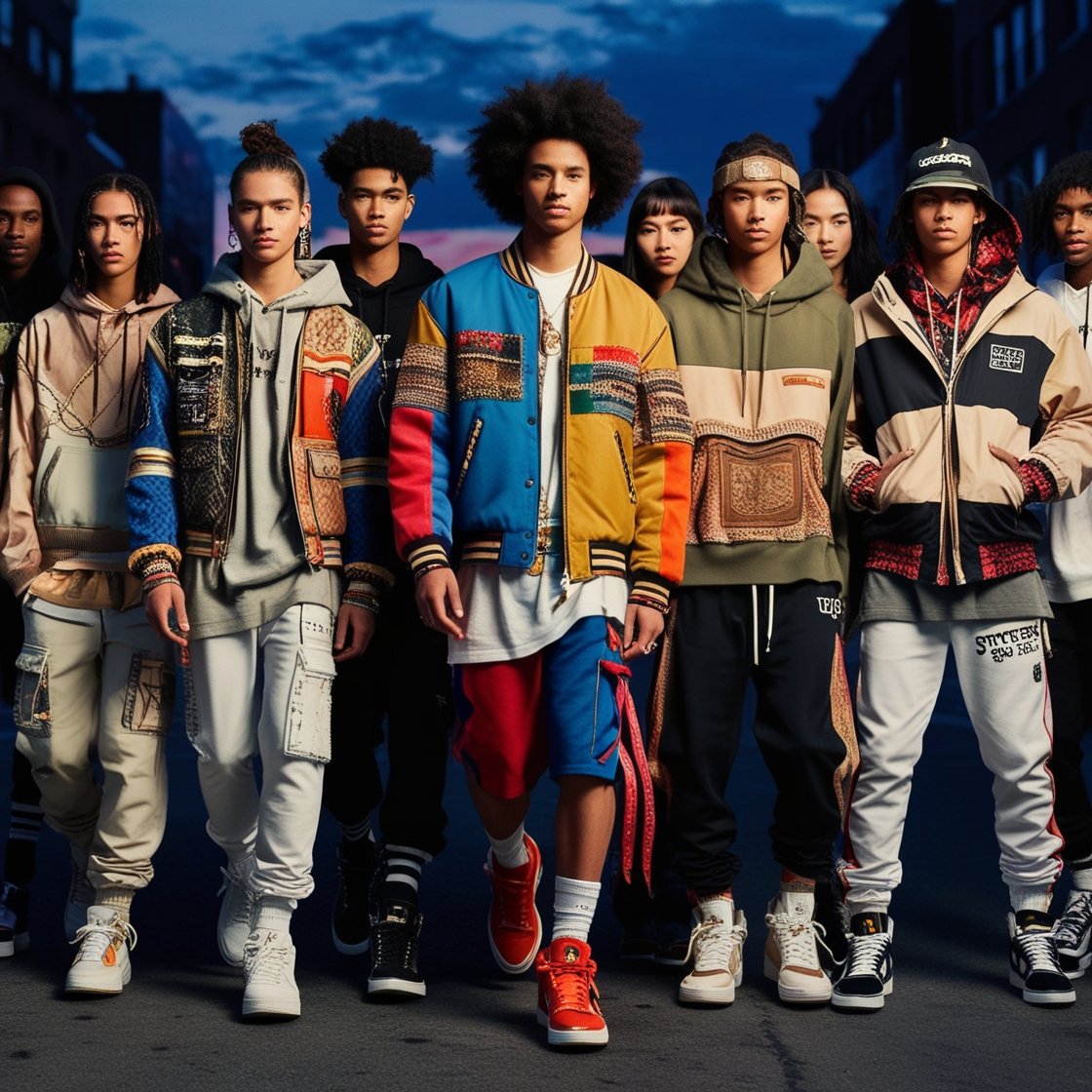Streetwear has evolved from a niche subculture into a major player in the fashion world, seamlessly merging with high fashion to create a new aesthetic that appeals to both luxury and casual enthusiasts. From skateboarding roots to runway shows, streetwear has undergone a fascinating transformation, blending comfort and style with bold statements. Let’s explore the journey of streetwear and how it has become a global phenomenon where high fashion meets casual style.
The Origins of Streetwear
Streetwear began in the late 1970s and early 1980s, taking inspiration from skateboarding, punk rock, and hip-hop cultures. Brands like Stüssy, Supreme, and FUBU emerged as early pioneers, representing an attitude of rebellion, authenticity, and creativity. Streetwear was about self-expression and pushing against the norms, with graphic tees, sneakers, and baggy clothing being staples of the movement.
The Rise of Sneaker Culture
Sneaker culture became an essential part of streetwear, with brands like Nike and Adidas playing a pivotal role. The release of Air Jordans in the mid-1980s revolutionized street style, turning sneakers into coveted status symbols. Over the years, sneaker collaborations with celebrities, athletes, and even luxury fashion houses have continued to push boundaries, turning the humble sneaker into a collectible piece of art and an essential component of streetwear culture.
Streetwear Meets High Fashion
The evolution of streetwear took a major turn when luxury fashion brands began to take notice. In the 2010s, collaborations between high fashion and streetwear brands—such as Louis Vuitton x Supreme—cemented the relationship between the two worlds. This fusion blurred the lines between luxury and casual, and elevated streetwear to new heights, making it a staple on the runway. Designers like Virgil Abloh, who became the creative director for Louis Vuitton menswear, helped bridge the gap by bringing streetwear’s ethos into the luxury sphere.
Key Elements of Modern Streetwear
Modern streetwear is defined by its unique combination of comfort, exclusivity, and cultural relevance. Hoodies, oversized t-shirts, cargo pants, and, of course, sneakers remain central elements of the style. Logos, limited-edition drops, and bold graphic prints are key features, giving the wearer a sense of individuality and exclusivity. The “drop” culture, where brands release limited quantities of products, has added a level of hype and urgency, transforming streetwear into a phenomenon that combines fashion with a sense of community.
Luxury Brands Embracing Streetwear
Luxury brands have fully embraced the streetwear trend, incorporating casual pieces into their collections and making streetwear accessible to a new audience. Balenciaga, Gucci, and Dior have all featured streetwear-inspired pieces, such as oversized hoodies, statement sneakers, and graphic tees. These luxury iterations often come with a high price tag, but they also add a sense of exclusivity and prestige to the casual style. The fusion of streetwear with luxury has helped redefine what high fashion can be, allowing casual, comfortable clothing to be as desirable as traditional luxury garments.
The Role of Influencers and Celebrities
Social media influencers and celebrities have played a huge role in popularizing streetwear. Artists like Kanye West, A$AP Rocky, and Travis Scott have become style icons, showcasing how to mix streetwear with high fashion. Kanye’s Yeezy brand and Travis Scott’s collaborations with Nike have made them powerful forces in the streetwear industry. Social media platforms like Instagram have allowed streetwear to become more visible, inspiring millions to adopt the style and fueling its growth as a global fashion movement.
Sustainability in Streetwear
As streetwear continues to evolve, sustainability has become a growing focus. Many new streetwear brands are prioritizing eco-friendly practices by using recycled materials and ethical production processes. Brands like Pangaia and Noah are paving the way for a more sustainable future in streetwear, showing that style doesn’t have to come at the cost of the environment. This shift towards sustainability is reflective of broader trends in the fashion industry, where consumers are increasingly demanding more responsible and ethical practices.
Streetwear Today and Beyond
Streetwear today is a blend of influences from music, art, sports, and high fashion. It has broken down traditional barriers, allowing individuals to mix luxury pieces with casual street staples, creating a unique style that feels personal and expressive. Streetwear’s influence can be seen in the collections of almost every major fashion house, proving that it is not just a passing trend, but a lasting force in the industry. As the line between high fashion and streetwear continues to blur, the future of fashion looks increasingly inclusive, versatile, and effortlessly cool.
Conclusion
The evolution of streetwear from its underground roots to high-fashion runways is a testament to its impact on the world of fashion. By combining comfort, exclusivity, and cultural relevance, streetwear has redefined the way we view luxury and casual style. Whether you’re sporting a luxury hoodie or a pair of limited-edition sneakers, streetwear allows you to express yourself in a way that feels both comfortable and stylish. The future of streetwear is bright, and its influence on fashion shows no signs of slowing down.


